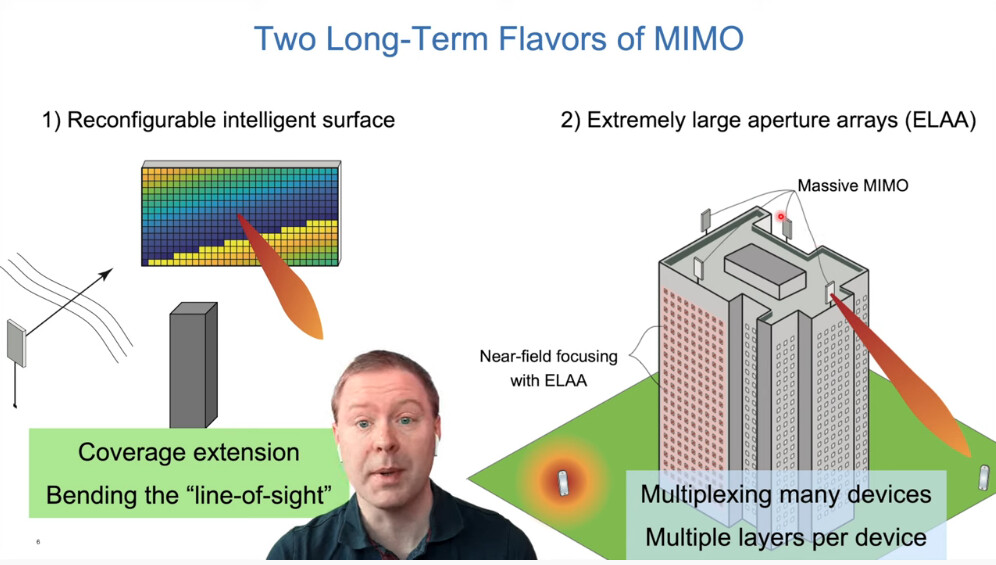This is Professor Emil Björnson’s opening presentation in the industry panel “From Theory to Practice: Emerging Antenna Array Technologies for 5G-Advanced” at the IEEE Wireless Communications and Networking Conference (WCNC) 2022. The panel was organized and moderated by Zhenfei Tang, Senior Manager of Wireless Research, Huawei.
The slides are available here: https://github.com/emilbjornson/presentation_slides/blob/master/WCNC2022_panel.pdf
Abstract of the panel:
With the rapid deployment of 5G networks and the maturity of 5G handsets, more and more new applications keep emerging in the market, which definitely triggers an explosion of mobile data traffic. It is projected that the data of usage (DoU) of an individual user per month will reach 150 GB by 2025 from 10 GB in 2020 at a compound annual growth rate (CAGR) of 65%. In addition to traditional data service, AV/VR will become popular and contribute DoU largely beyond 2025.
Toward 2025 and beyond, to meet these requirements and challenges, 5G-Advanced was approved by 3GPP for further evolving 5G with emerging technologies. 5G-Advanced will start from Release-18 and continue several releases.
Massive multiple-input multiple-output (MIMO) is one of the key enabling technologies and building blocks of 5G for both sub-7 GHz and mmWave frequencies to meet the extremely higher data rate. The evolution of massive MIMO is also recognized as one of the most crucial technical means in 5G-Advanced.
In theory, recently several prospective antenna array technologies represented by massive MIMO are emerging and getting more and more attention towards 5G-Advanced. For example, novel antenna system architectures, such as extremely large aperture arrays (ELAA) and smart surfaces (e.g., intelligent reflecting surfaces (IRSs) or reconfigurable intelligent surfaces (RISs)), and evolved network architectures, such as cell-free massive MIMO or user-centric no cell (UCNC) deployment. Machine learning (ML) used for massive MIMO is also one of the hot topics for research.
However, in practice to render these promising technologies feasible for commercial rolling-out in the future, there are still many issues and challenges that need to be addressed. The fundamental question is that in which practice scenarios those emerging technologies provide a significant performance advantage over traditional technologies, such as massive MIMO, relay, and repeater. With increasingly complex implementation, reducing the product cost, size, and weight while maintaining the performance is one of the crucial factors for real deployment.
This panel of experts will be engaged in exchanging views on emerging multi-antenna array technologies from both theory and practice perspectives. We hope that this will inspire a large number of researchers and engineers from both academia and industry to think about and tackle the open issues towards the successful applications of these technologies in 5G-Advanced toward 2025 and beyond.

![Emerging Antenna Array Technology: What do we need in practice? [Industry Panel at WCNC 2022]](https://www.telecomhall.net/uploads/db2683/original/3X/3/d/3d7d2f31f490faa51b4fce0ef847a34a0652f640.jpeg)